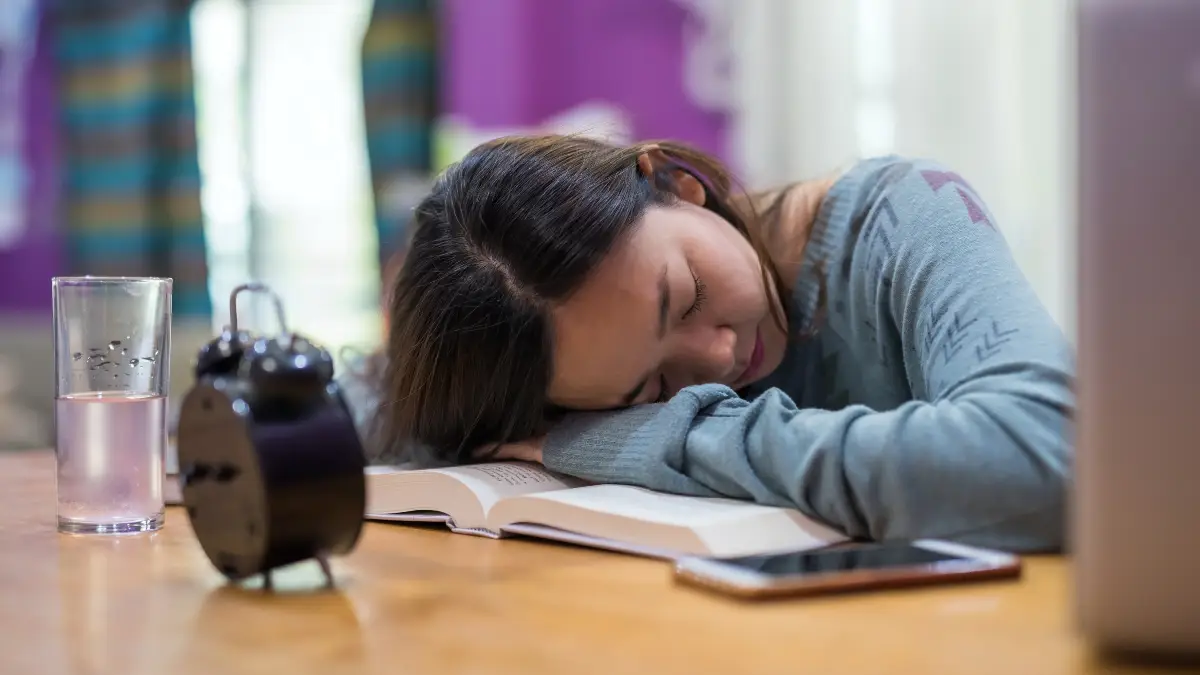You’ve tried everything for a better night’s sleep. The calming apps, the special curtains, maybe even the expensive mattress that was supposed to fix it all. Yet, you still wake up feeling like you barely slept.
This is a serious problem because your body must have good sleep to function properly. Not getting enough is linked to a weaker immune system and makes it harder to think clearly.
What if the answer isn’t another gadget or pill? What if it’s a simple trick based on your body’s own temperature?
This report will show you the science, much of it from Stanford University, that explains why a small drop in your core temperature is the key to unlocking the deep, refreshing sleep you’ve been missing.
We will look at the proof and give you a guide to what might be the most powerful way to improve your sleep.
How a Stanford Lab Found Nature’s Radiators by Studying Bears
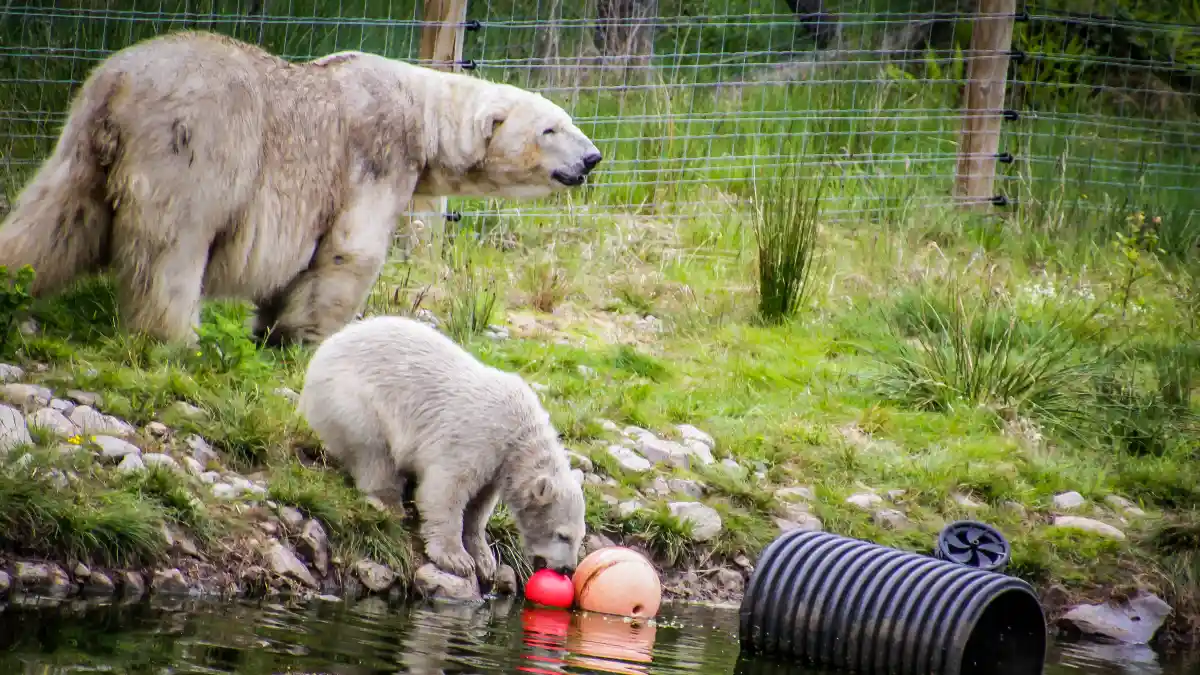
The story of how science connected temperature and sleep didn’t start in a sleep clinic. It began in a Stanford University biology lab with a question about black bears.
Professor H. Craig Heller and his colleague Dennis Grahn had a puzzle: how do these animals, with their thick fur and fat for winter, avoid overheating when spring comes? They couldn’t just take off their coats. The answer was in special parts of their bodies.
On a thermal camera, a bear’s body is cool, except for the pads of its feet and the tip of its nose. Those parts glow brightly, showing they are releasing a lot of heat. Heller and Grahn called these spots the body’s “natural radiators.”
In people, these are the hairless parts of your skin—the palms of your hands, the soles of your feet, and parts of your face. These small areas are built to exchange heat with the air very quickly.
The secret is a special network of blood vessels called arteriovenous anastomoses, or AVAs. These aren’t the normal tiny blood vessels. They are like special highways that connect arteries directly to veins.
This lets a large amount of blood flow right under the skin just to manage temperature. The blood flow here can change a lot. When it’s cold, almost no blood flows through.
But when you exercise or get hot, the flow can be huge—up to 60 percent of all the blood your heart pumps. This turns your palms and soles into cooling fins.
This discovery led to a new invention. Heller and Grahn made a device to cool the body’s core fast. Called “the glove,” it used a light vacuum on the hand to pull blood into the AVAs in the palm.
Then, cool water in the device would pull heat from the blood before it went back to the heart. It was first made to help athletes with tired muscles, and the results were amazing.
It helped them recover almost instantly between sets of hard exercise, letting them do much more work. The results were so good that Dennis Grahn said the tech was “Equal to or substantially better than steroids… and it’s not illegal”.
This success with athletes was just one use of a bigger biological idea. Dr. Heller’s work shows a theme that connects hibernation, tired muscles, and sleep. All three are about how the body manages energy and temperature.
His work showed that animal hibernation is an “extended form of sleep” where the body’s thermostat is turned down to save energy.
The cooling glove proved that muscles get tired during exercise mainly because they get too hot, not because they run out of fuel. And his sleep research showed that your body’s temperature control changes during sleep stages.
The temperature setting is lowered during deep sleep and is almost turned off during REM sleep.
The link is clear. The same body systems that let a bear save energy by cooling down (hibernation) are a version of the systems that control our own nightly sleep, which is also about saving energy by cooling down.
When these systems fail—by overheating—muscles get tired. The “cooling glove” was more than a tool for athletes; it was proof that by using the body’s natural radiators, you could directly control important body states.
This discovery, which started with bears, built the scientific foundation for this idea: to control sleep, you first have to control temperature.
Why Your Body Must Cool Down to Sleep
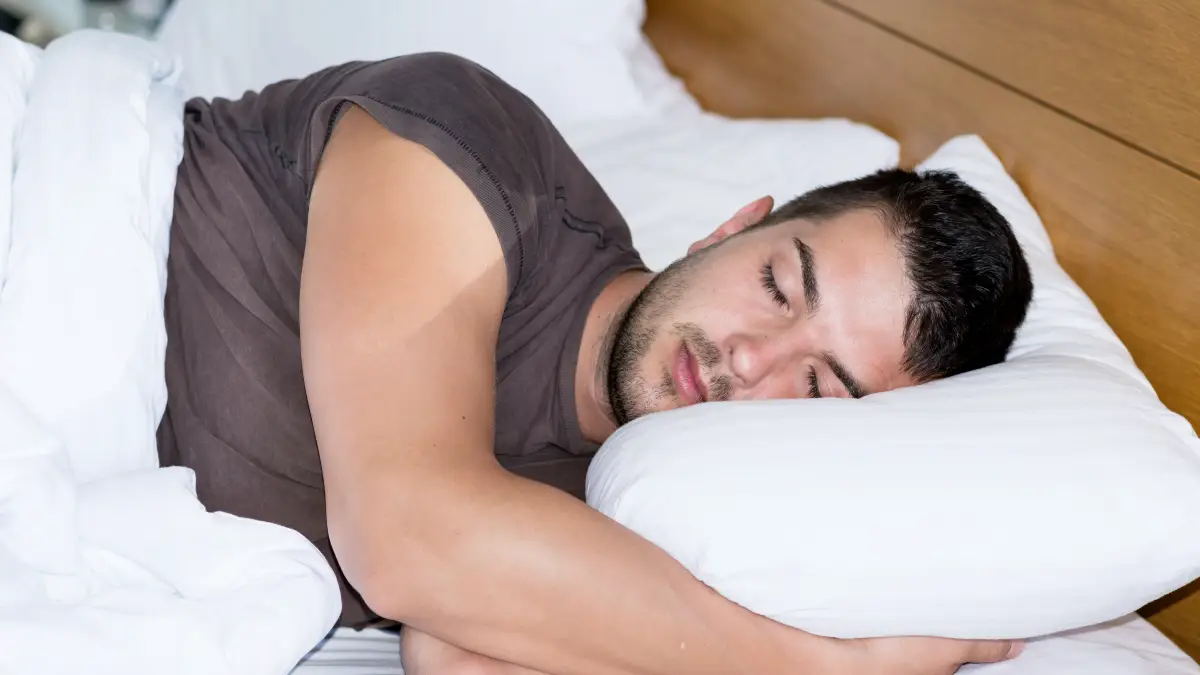
Going from awake to asleep isn’t like flipping a switch. It’s a careful process, and it has one main rule: to fall asleep and get into the deepest stages, your core body temperature has to drop by about 2 to 3 degrees Fahrenheit. This drop isn’t a side effect of sleep; it’s a necessary trigger.
This happens when two main sleep-regulating systems line up. The first is your circadian rhythm. Think of this as your body’s main internal clock, located in a part of your brain called the hypothalamus.
This clock is mostly set by the daily cycle of light and dark, and it controls many body functions, including your daily body temperature cycle. Your core temperature is highest in the late afternoon and starts to drop in the evening. This is a key signal that your biological night has started.
The second system is your “sleep pressure”. From the moment you wake up, a chemical called adenosine starts to build up in your brain. The longer you’re awake, the more adenosine you have, and the sleepier you feel.
When you sleep, your brain clears out the adenosine, which lowers the sleep pressure and gets you ready for the next day.
The hypothalamus is the command center that reads the signals from both systems. It checks the body clock to see if it’s nighttime and also monitors your body’s temperature.
When the clock says it’s evening and your sleep pressure is high, the hypothalamus starts the critical drop in core body temperature that lets you fall asleep.
Your body cools down by getting rid of the heat it already has. It does this mainly through peripheral vasodilation, which means the blood vessels near your skin get wider.
As nighttime gets closer, your brain tells the radiators in your hands and feet to open up. Blood moves from your core to your skin, where the heat can escape into the cooler air.
This is why having warm hands and feet right before bed is a good sign that your core is cooling down and getting ready for sleep.
This shows that your core body temperature is the conductor of the sleep orchestra. The body clock and sleep pressure are translated into a real, physical signal—a drop in temperature—that tells your brain, “It’s time.
Start the sleep process.” This is why it’s so hard to fall asleep in a hot room or after a hard workout late at night, even if you feel very tired.
Your sleep pressure might be high, but if your core temperature is too high and can’t drop, the gates to sleep stay closed. Your ability to fall asleep is tied to your body’s ability to cool itself down.
3 Simple Tricks to Cool Your Core for Better Sleep
The science is clear: your body needs to drop its core temperature to sleep well, and it uses the radiators in your hands and feet to do it.
This gives us a clear path to improve sleep. Any method that helps your body cool down faster should help you fall asleep and get better rest. Research confirms this and points to a few practical “tricks” you can use.
1. The Strange Magic of a Warm Bath
It might sound odd, but one of the best-proven methods is taking a warm bath or shower before bed.
Heating your body to cool it down seems backward, but the science works. A large review of studies confirmed this method works and explained how.
When you get into hot water, your body has a strong, automatic reaction. Your brain feels the hot skin and, to stop your core from overheating, it sends a lot of blood from your deep tissues to the surface of your skin.
This is the same process that happens naturally in the evening, but it’s much faster and stronger. When you get out of the bath, your skin is full of warm blood, and that heat quickly escapes into the cooler air.
The result is a fast and large drop in your core body temperature, which sends a powerful signal to your brain that it’s time to sleep.
Research gives a specific recipe to get the best results. The best time to take a bath is about 90 minutes to two hours before you go to bed. This gives your body enough time for the cooling-down phase to line up with your natural temperature drop.
If you bathe too close to bedtime, your core temperature might still be too high when you try to sleep. The best water temperature is between 104 and 109 degrees Fahrenheit (40-42.5°C).
You should stay in for at least 10 minutes to get a strong response. Studies show that doing this can help you fall asleep about 10 minutes faster and feel like you slept much better.
2. Use Your Hands and Feet Like a Thermostat
You can also use the natural radiators in your hands and feet to control your core temperature. The advice to wear socks to bed is backed by science. Cold feet can make your blood vessels narrow to save heat.
This tells your brain that your body is cold, which can stop your core temperature from dropping. By warming your feet with light, breathable socks, you encourage the blood vessels to open.
This opens up the powerful AVAs in your soles, giving your core body heat an easy way to escape. This helps the cooling process, helping you fall asleep faster and get better sleep.
On the other hand, just sticking your hands or feet out from under the covers is a great way to cool down in real-time.
This puts your radiator surfaces in direct contact with the cooler air in your room, which allows for quick heat exchange to help you manage your temperature during the night.
3. How to Create the Perfect Cool Room
These tricks work best in a room that helps your body’s natural temperature regulation. The temperature of your bedroom is a key factor. Most sleep experts and studies suggest a cool bedroom, with a temperature between 60-67°F (16-19°C).
A room that’s too warm makes it hard for your body to lose heat. A room that’s too cold can make you uncomfortable and cause your body to try to save heat. Both can mess up your sleep.
Besides setting the thermostat, here are a few simple ways to create a good thermal environment:
- Get the Air Moving: A ceiling fan (spinning counter-clockwise in summer to push cool air down) or a simple portable fan can help heat leave your skin. Opening windows to create a cross-breeze in the evening can also help push warm air out of the room.
- Block Daytime Heat: Sunlight can heat up a room a lot during the day. Keeping blinds, shades, or blackout curtains closed can block this heat and keep the room cooler for the evening.
- Pick Breathable Materials: Your bedding and pajamas create a small environment around your body. Materials that trap heat and sweat, like heavy synthetic fabrics, can disrupt your temperature regulation. Choose natural, breathable fabrics like cotton, bamboo, or linen. They let air move and sweat evaporate, which helps your body cool down.
- Time Your Meals and Workouts: Digesting food and hard exercise both create heat and raise your core body temperature. Eating big meals or doing a tough workout too close to bedtime can raise your core temperature and make it harder to fall asleep. It’s best to finish big meals and hard workouts at least two to three hours before you go to sleep.
These methods, from a warm bath to the right kind of sheets, give you a set of tools to manage your body’s temperature for sleep.
| Technique | How It Works | Best Way to Do It | What It Does | Effort / Cost |
| Warm Bath/Shower | Causes a reflex that sends blood to the skin, leading to a fast drop in core temperature after the bath. | Water at 104-109 F (40-42.5 C) for 10+ minutes, 90-120 minutes before bed. | Helps you fall asleep ~10 mins faster; improves sleep quality. | Medium / Low |
| Wearing Socks | Warms the feet, which helps blood vessels open and lets core body heat escape. | Light, breathable socks made of natural fibers. | Helps you fall asleep faster and get better quality sleep. | Low / Low |
| Cooling Hands/Feet | Puts the radiator surfaces of your hands and feet in contact with cooler air for direct heat exchange. | Stick your hands or feet out from under the covers when you feel warm at night. | A good way to manage your temperature in real-time. | Low / None |
| Cool Room | Creates an environment that helps your body naturally lose heat to its surroundings. | Keep your bedroom at 60-67 F (16-19 C). | A basic need for high-quality sleep. | Low-Medium / Low-High |
Can a Smart Bed Really Double Your Deep Sleep?
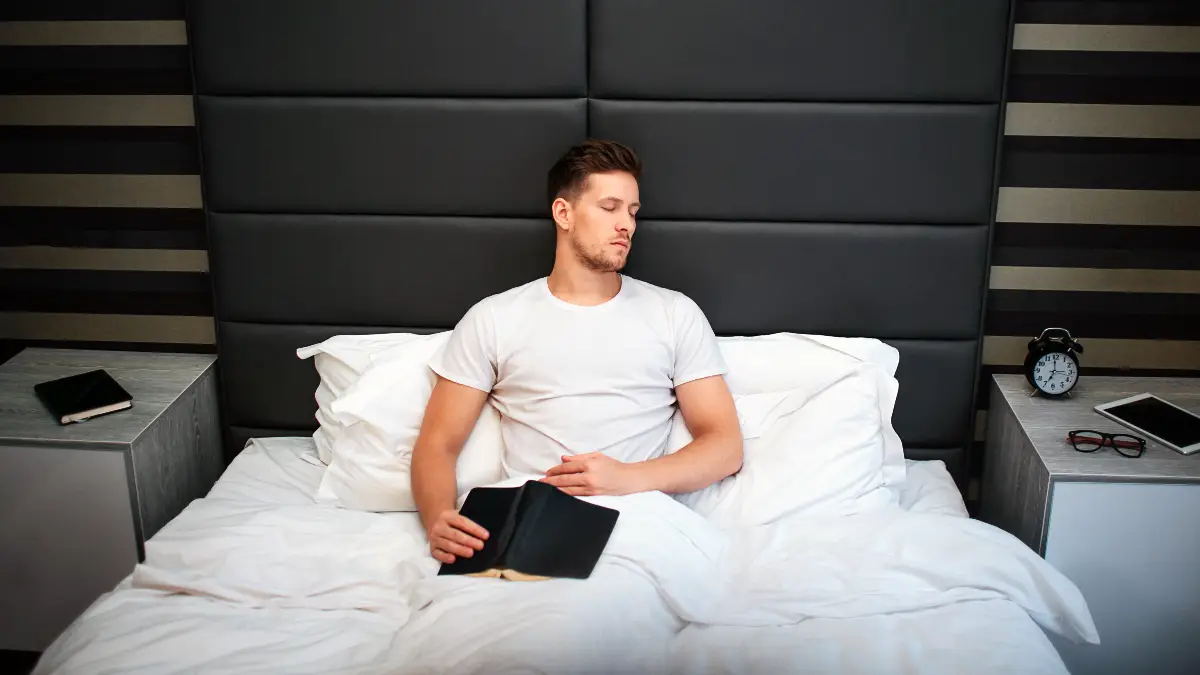
If simple tricks can have such a big impact on sleep, what could technology do if it was designed to manage this process all night long? This question has opened up a new area of sleep science.
The focus is moving from creating a static, cool room to making active systems that directly control your body’s temperature.
A key study shows just how powerful this can be. Researchers made a “Novel temperature-controlled sleep system” to see if they could improve sleep even in tough situations.
The system had two parts: a mattress with two temperature zones (cooler in the middle under the torso, and warmer on the sides under the hands and feet) and a special pillow that gently heated the skin on the neck.
The warming of the sides and neck was meant to help the body get rid of heat, while the cooling of the core would help the body temperature drop.
The study was very strict. The 11 healthy men in the study were told to go to bed two hours earlier than they normally would. This was done to make sure it would be hard for them to fall asleep.
The results were amazing. Compared to a normal night, the temperature-control system made their core body temperature drop much earlier and faster.
This led to a huge reduction in the time it took them to fall asleep—an average of 48.6 minutes faster. The technology helped them fall asleep nearly an hour faster under difficult conditions.
So, can this technology really “double” your deep sleep? The data needs to be looked at carefully. A full 100% increase in the total minutes of deep sleep is a very high bar and hasn’t been shown in the studies we have.
But the effects that have been seen are still huge. Some companies that make sleep technology, which have done trials with places like Stanford, say their systems can increase deep sleep by up to 20%. A 20% increase in the most restorative stage of sleep is a massive improvement in sleep quality.
Also, falling asleep almost an hour faster, as seen in the study, adds nearly an hour of potential sleep time to your night. For someone who has trouble sleeping, falling asleep an hour faster can feel like a huge win.
So, the “doubling” claim might not be about literally doubling the minutes, but about doubling the power and efficiency of the sleep process. The technology helps the body’s natural cooling systems work much better to get a dramatically improved result.
This research has led to a new type of product for consumers. Companies like 8Sleep have made mattress covers that use circulating water to change the bed’s temperature all night.
These systems can be set to cool your body to help you fall asleep, keep the temperature just right during deep and REM sleep, and then gently warm you up in the morning to help you wake up naturally. All of this is done in sync with your body’s natural daily temperature rhythm.
This change from passive room control to active, automatic control is a big shift in sleep medicine. In the past, sleep advice focused on setting the stage for sleep—making a dark, quiet, and cool room.
The tricks in the last section are a step toward active things you can do yourself. These new technologies are the final step to automated, active help. The bed itself becomes a tool that checks and responds to your body in real-time to create the perfect temperature for sleep.
This is a big change from just hoping you get good sleep to actively creating the exact biological conditions needed for it to happen.
Why You Need Deep Sleep
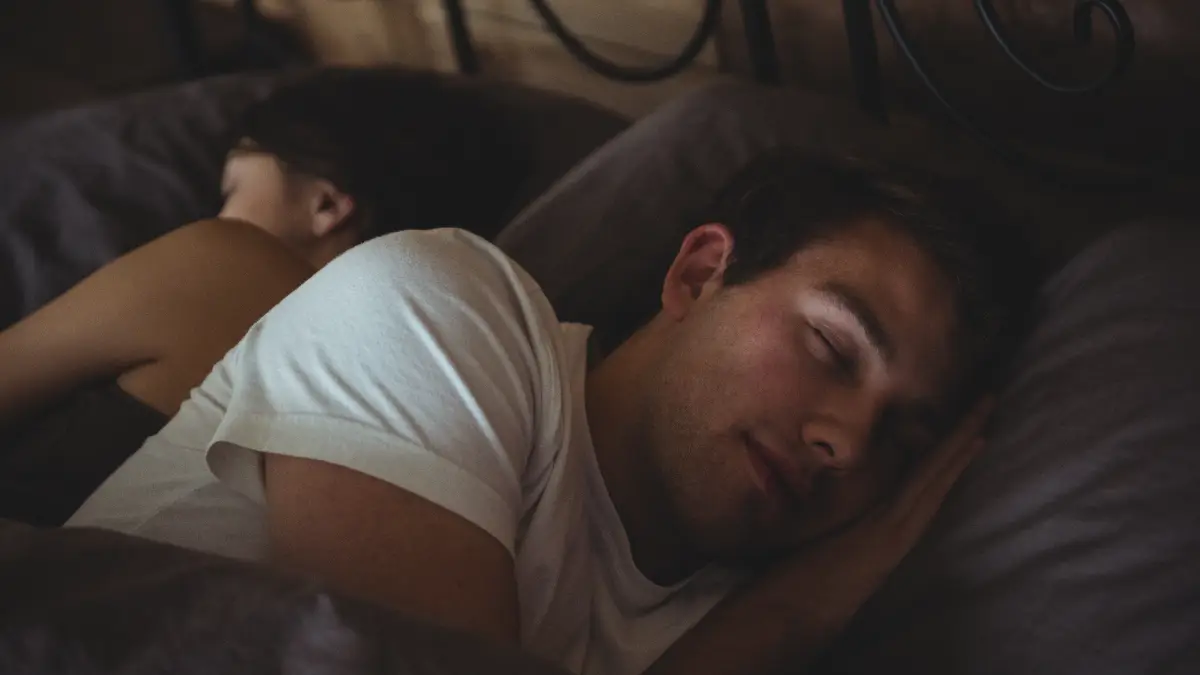
The main reason to control your core body temperature—whether with socks or a smart mattress—is not just to sleep longer.
It’s to get more and better quality of the most important phase of sleep: deep sleep, also known as slow-wave sleep. This is the stage where your body and brain do their most important repair work.
Deep sleep is identified by big, slow delta waves in your brain’s electrical activity. For a healthy adult who gets seven to nine hours of sleep, deep sleep usually makes up 10% to 20% of the night. That’s about 40 to 110 minutes of this key stage each night.
Your body makes deep sleep a priority, so you get most of it in the first half of the night.
During this time, a lot of important restorative things happen that are vital for your physical health, immune system, and brain function:
Physical Repair and Growth:
During deep sleep, your body releases a large amount of growth hormone. This hormone is key for repairing and rebuilding tissues, muscles, and bones. It’s your body’s main time for physical recovery.
Immune System Strength:
Your immune system is very active during deep sleep. It works on building its memory, which helps your body fight off germs better in the future. Good sleep, especially deep sleep, is needed for a strong immune response.
Brain Cleaning:
Your brain has its own waste-removal system. This system works up to 60% harder during deep sleep to clean out toxins that build up while you’re awake, including beta-amyloid plaques, which are linked to Alzheimer’s disease. This nightly “brain washing” might be a key way to protect against brain diseases.
Memory Storage:
While REM sleep is known for its role in memory, deep sleep is also very important, especially for storing facts, events, and knowledge. The slow brain waves of deep sleep are thought to help move memories from short-term storage to long-term storage.
Because it does so many important things, not getting enough deep sleep can have bad effects. Right away, you might feel less alert, have trouble paying attention, and find it hard to learn and remember things. You might also be more irritable.
Over time, a lack of deep sleep can lead to the same health problems as general sleep loss, including a higher risk of infections, obesity, type 2 diabetes, and heart problems like high blood pressure, stroke, and heart disease.
So, working to get your core body temperature right is a direct way to make sure you get enough time in this vital state of repair.

